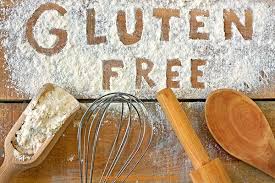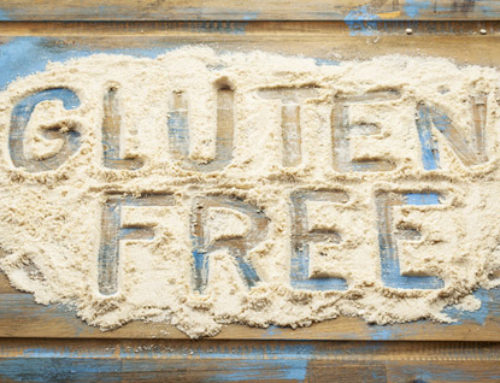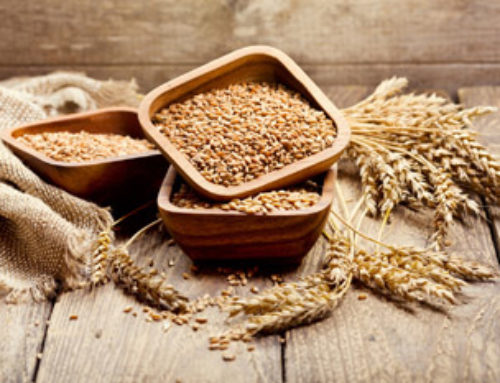Gluten Free Diet
A major trend in eating habits right now is the Gluten free diet. Hollywood actresses like Jennifer Aniston and Gwyneth Paltrow give credit to the lifestyle keeping them in shape. Professional athletes like Novac Djokovic and UFC fighter Dennis Hallman, say the diet has revitalized their careers. I am continually asked about this lifestyle choice; whether it is because patients suffer from Celiac Disease, wheat sensitivities, or just feel it is better suited for their lifestyle. Sticking to a gluten free diet can be complicated. There are many hidden preservatives and fillers that, although not called “gluten”, are a gluten derivative. If you are considering this diet for your own life, it is a good idea to do a little research on products and foods you can and can’t have.
like Jennifer Aniston and Gwyneth Paltrow give credit to the lifestyle keeping them in shape. Professional athletes like Novac Djokovic and UFC fighter Dennis Hallman, say the diet has revitalized their careers. I am continually asked about this lifestyle choice; whether it is because patients suffer from Celiac Disease, wheat sensitivities, or just feel it is better suited for their lifestyle. Sticking to a gluten free diet can be complicated. There are many hidden preservatives and fillers that, although not called “gluten”, are a gluten derivative. If you are considering this diet for your own life, it is a good idea to do a little research on products and foods you can and can’t have.
There are lots of resources out there, but I am fortunate to have a colleague that has become an excellent gluten free cook. I asked her to share how she incorporates wheat free alternatives into baking. If you are considering this diet or just want to find new, innovative ways of cooking continue reading Brandi’s discussion below.
Update: Since this article was created in 2011, Kenneth Brown, M.D. and Brandi Scott-Hoy developed an all natural supplement that helps many with bloating and gluten sensitivities called Atrantil. While eliminating gluten from your diet is the best choice for those with gluten sensitivities, Atrantil is a good natural choice when cross-contamination may become an issue. To learn more about Atrantil visit Atrantil.com.
Enjoy,
By Kenneth Brown, M.D.
It can be very tricky to figure out how to utilize wheat free alternatives. Unfortunately, there is not a wheat free flour that is a great one-to-one substitute for wheat flour. The easiest way to figure out what can be substituted, in order to achieve the desired texture and consistency, is to look at the science behind it. I find this simple science to be the most interesting part of the gluten free diet. Grains are made up of two basic components: protein and starch. Gluten is the protein component of wheat, which binds and holds the ingredients together when heated. This is the main thing to keep in mind when finding a substitute that works for you.
Starches
There are four major wheat free starches: corn, arrowroot, tapioca, and potato. The four are interchangeable, but are not sufficient to hold baked goods together because they lack protein. Starches are good for thickening things like soups, sauces, and gravies due to their tasteless nature. However, it does not act exactly as wheat flour would. It has a tendency to create gooey lumps when heated, but this can be avoided by making a slurry prior to heating.
Low-Protein Flours
Low-protein flours do contain both starch and protein from the grain. These can be substituted for wheat where the binding agent is not as important; ideally for thickening sauces, batters, and flatbreads. These flours can also be combined with other flours and baking aids in order to gain more of the binding properties. Rice flour is probably the most commonly used in this category because of its neutral flavor. But when using rice flour, the texture of the baked good will be slightly gritty due to the texture of the flour. Other options for low protein flours with neutral flavors are millet and corn flour.
Amaranth, quinoa, sorghum, and buckwheat flour have similar protein contents to millet, corn, and rice. Because of this, they are generally unsuitable for baking on their own, due to the lack of protein. These low-protein flours have a much stronger flavor, so are best used where their flavor is the focal point or they can be combined with high-protein flours to mellow their distinct flavors.
High-Protein Flours
High-protein flours are mostly made from legumes, including; garbanzo, fava, and soy. Coconut and nut flours, such as almond flour, are great high-protein alternatives as well. These are all good substitutes in baking because of the binding ability, due to the high protein content. However, high-protein flours do have strong, distinct flavors. To derive a more neutral taste, these flours can be combined with a lower-protein flour for a more neutral flavor. The high-protein flours are usually not a good choice for sauces and gravies because of their strong flavor.
Gums
Gums are used in combination with flour mixes in baking as a substitute for gluten because of their strong binding properties. The two most commonly found in recipes are xanthan gum, derived from sugar (often from corn), and guar gum derived from a type of bean. These gums are a must, if baking with low protein flours.
Many additional ingredients can be used to add protein to baked goods made primarily from lower-protein flours. Milk, eggs, soy milk, coconut milk, and other nondairy milk alternatives are just a few that are easily incorporate as protein enhancers. Ingredients such as yogurt can be used to add extra protein and flavor at the same time.
There are a variety of ways in which to incorporate wheat-free proteins, starches, and gums. Each ingredient has its own appeal with unique textures and flavors. If you enjoy cooking and baking, whether you follow a gluten free diet or not, these wheat-free alternatives open up endless possibilities for new recipes.
Have fun experimenting!
Brandi Scott-Hoy
Clinical Research Supervisor
Disclaimer: The information presented on this website is not intended to take the place of your personal physician’s advice and is not intended to diagnose, treat, cure or prevent any disease. Discuss this information with your healthcare provider to determine what is right for you. All information is intended for your general knowledge only and is not a substitute for medical advice or treatment for specific medical condition



